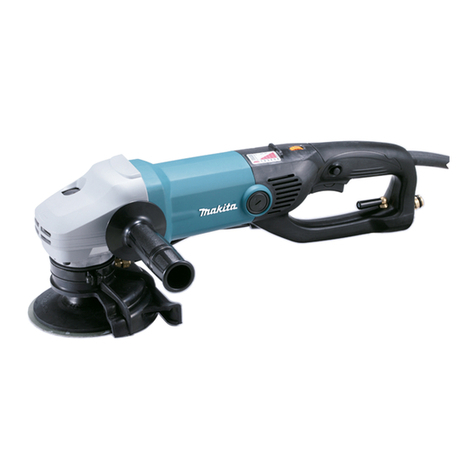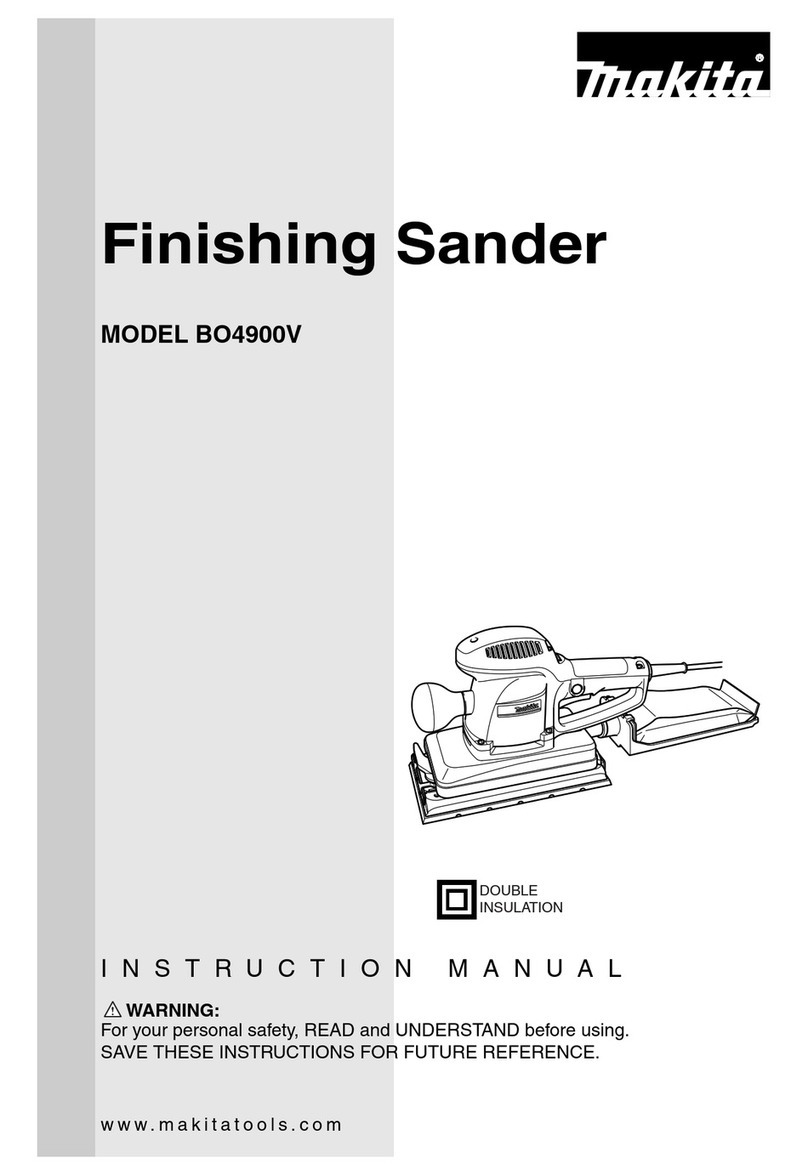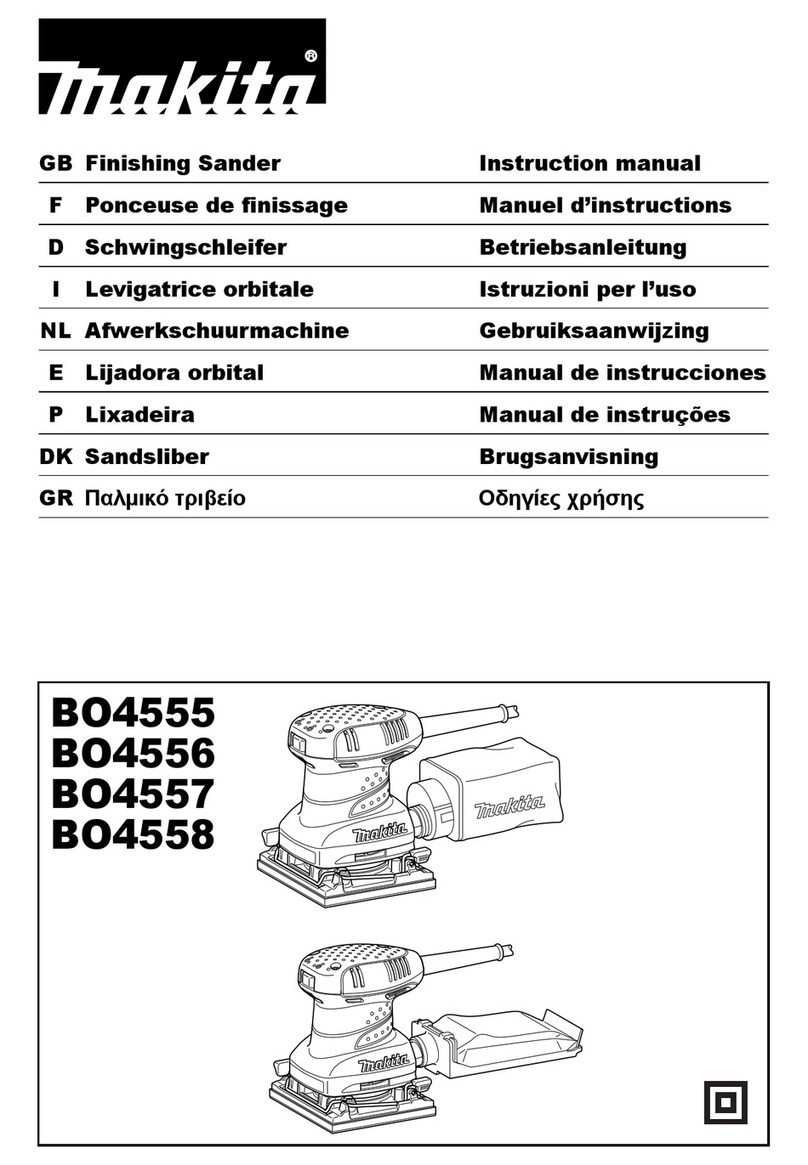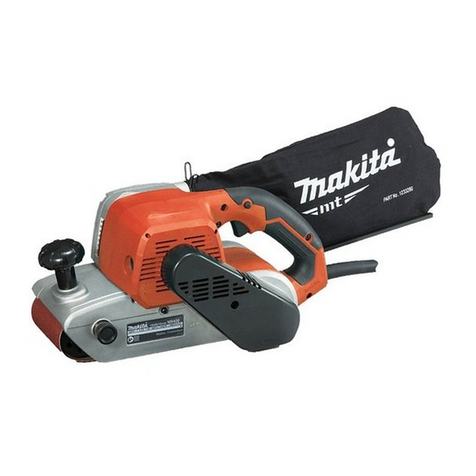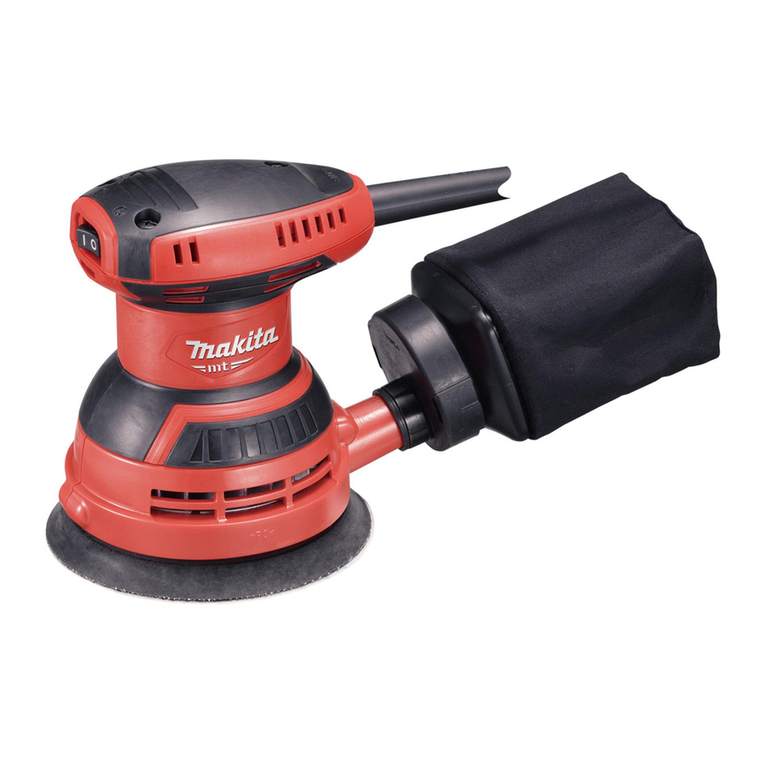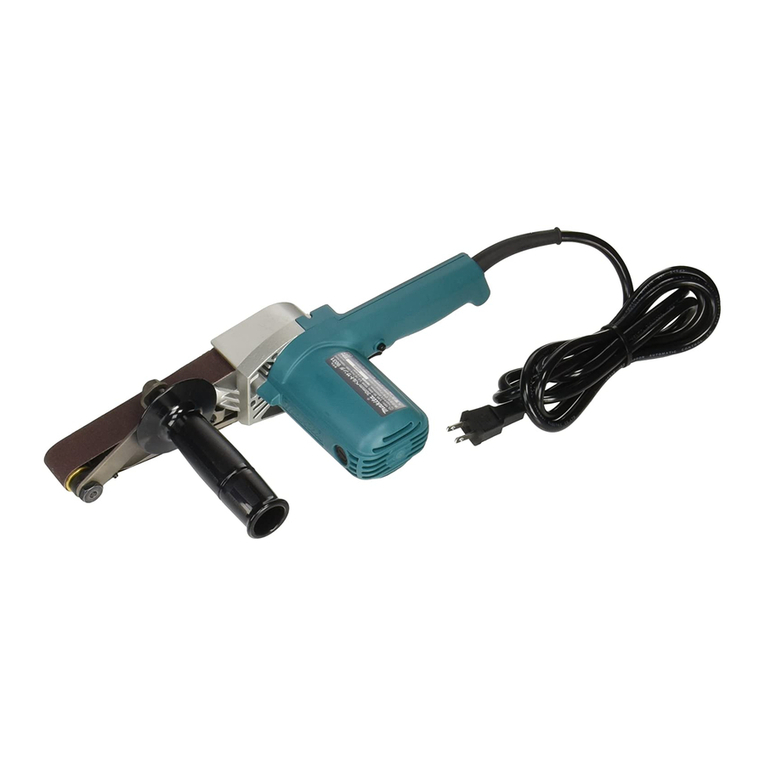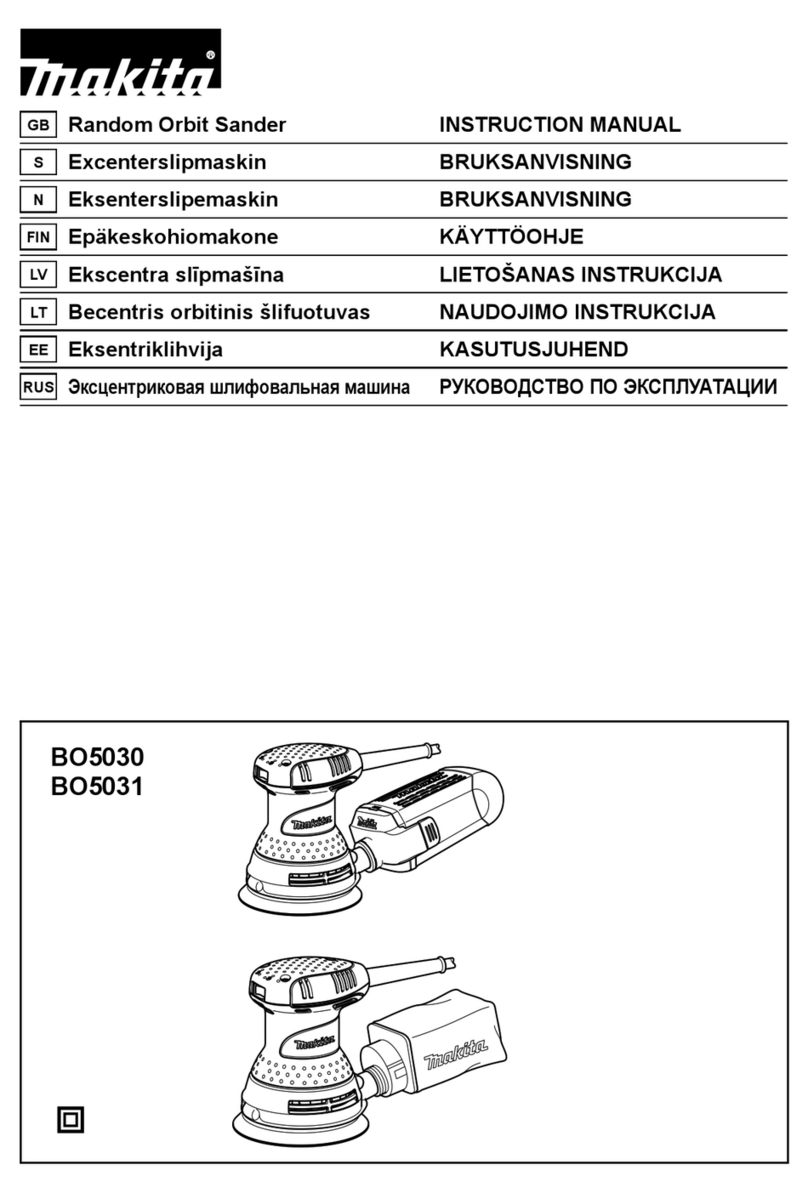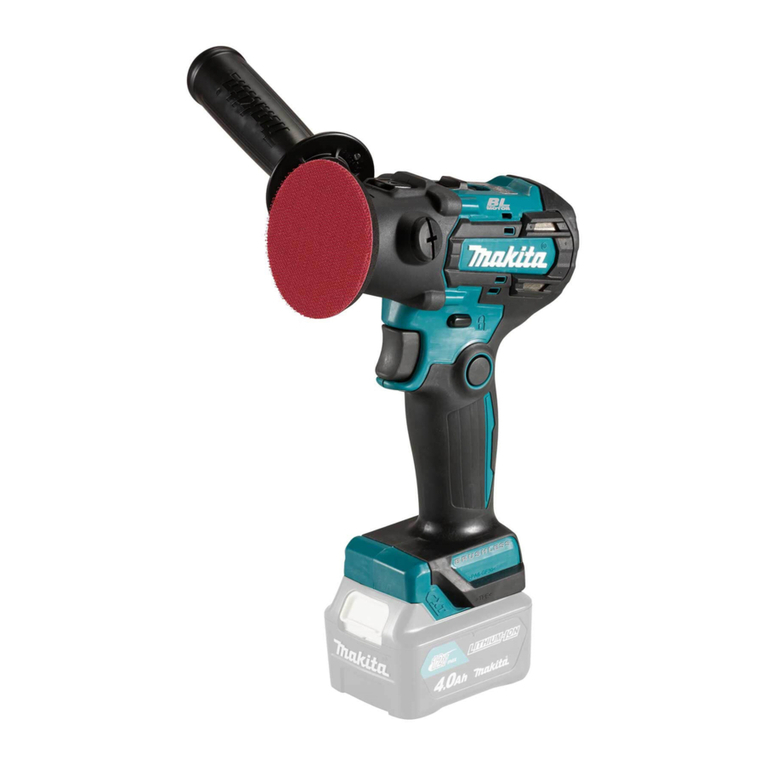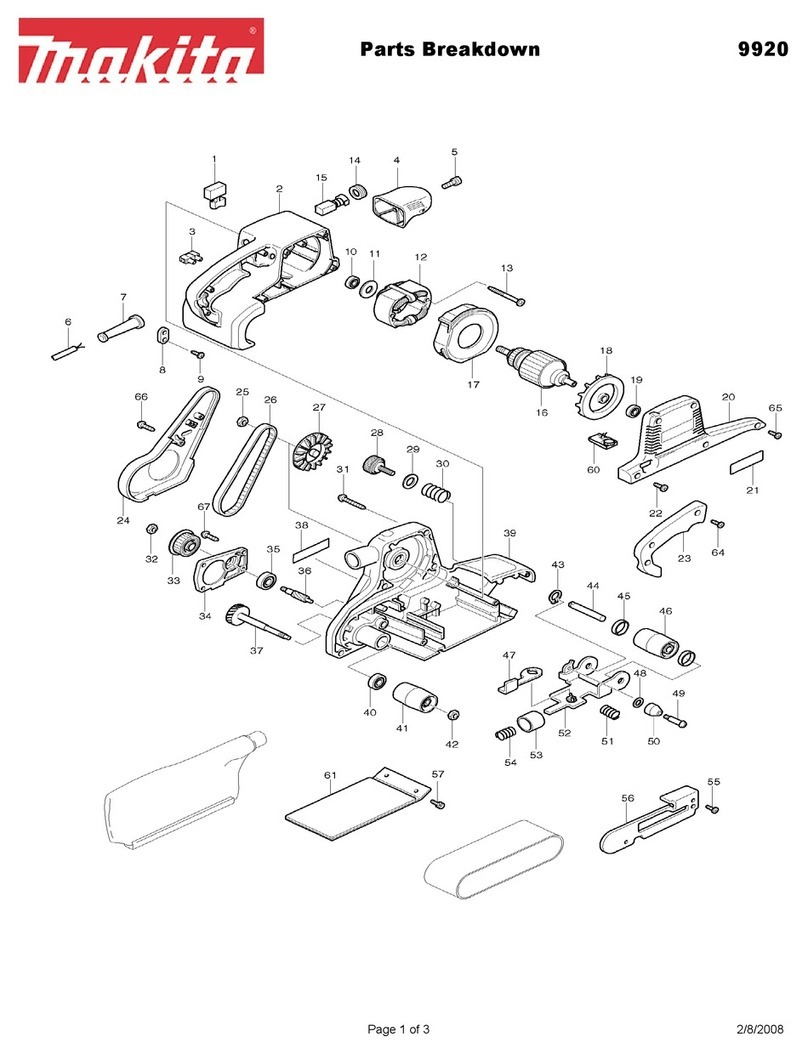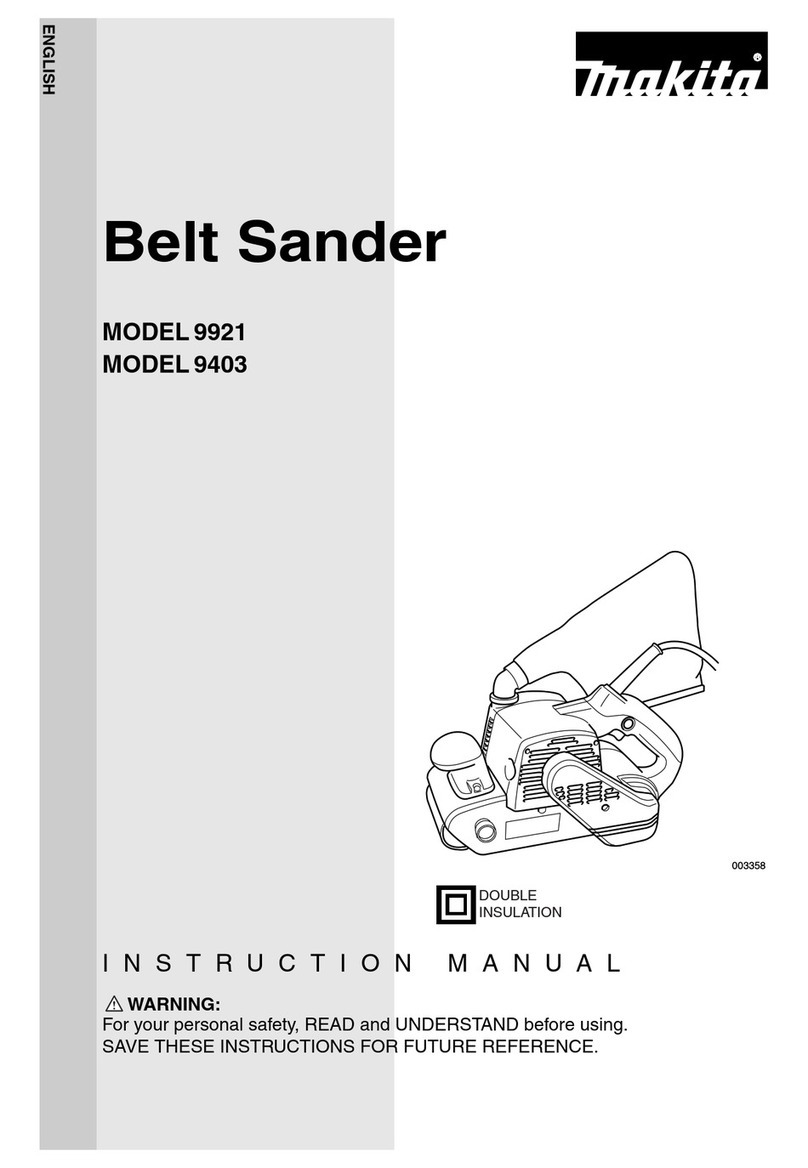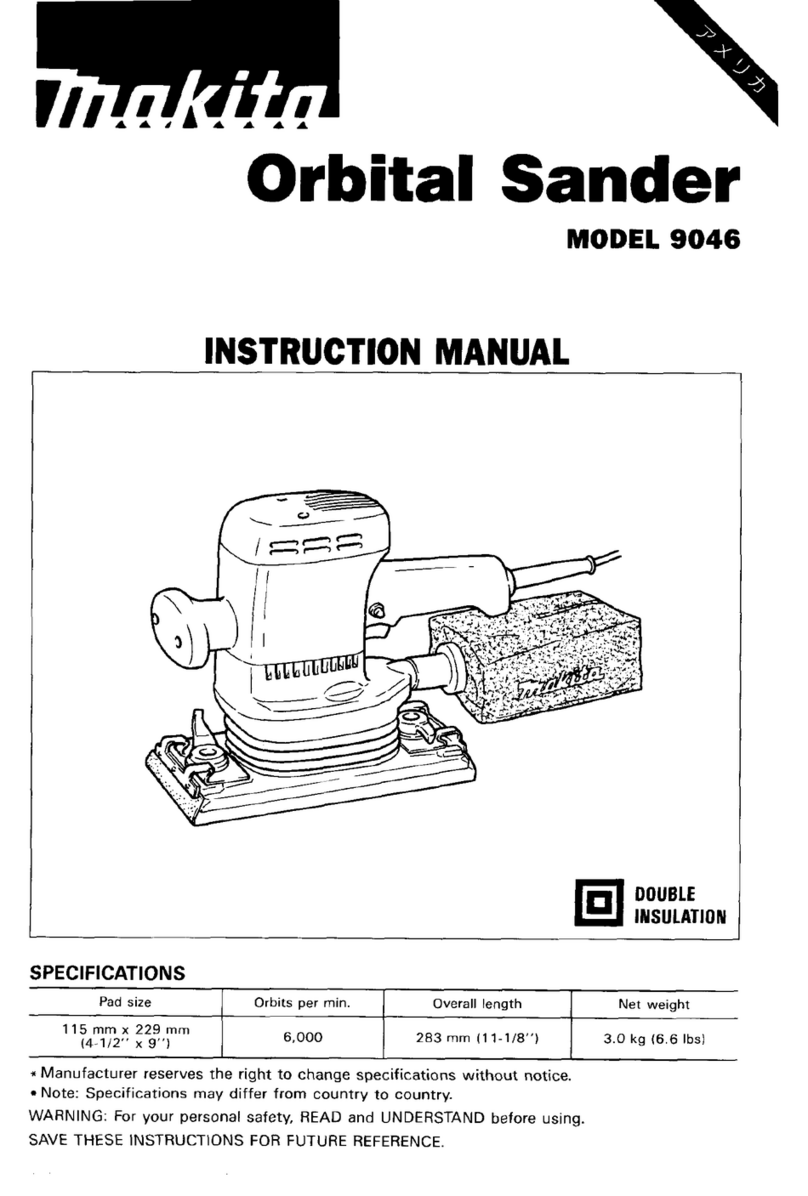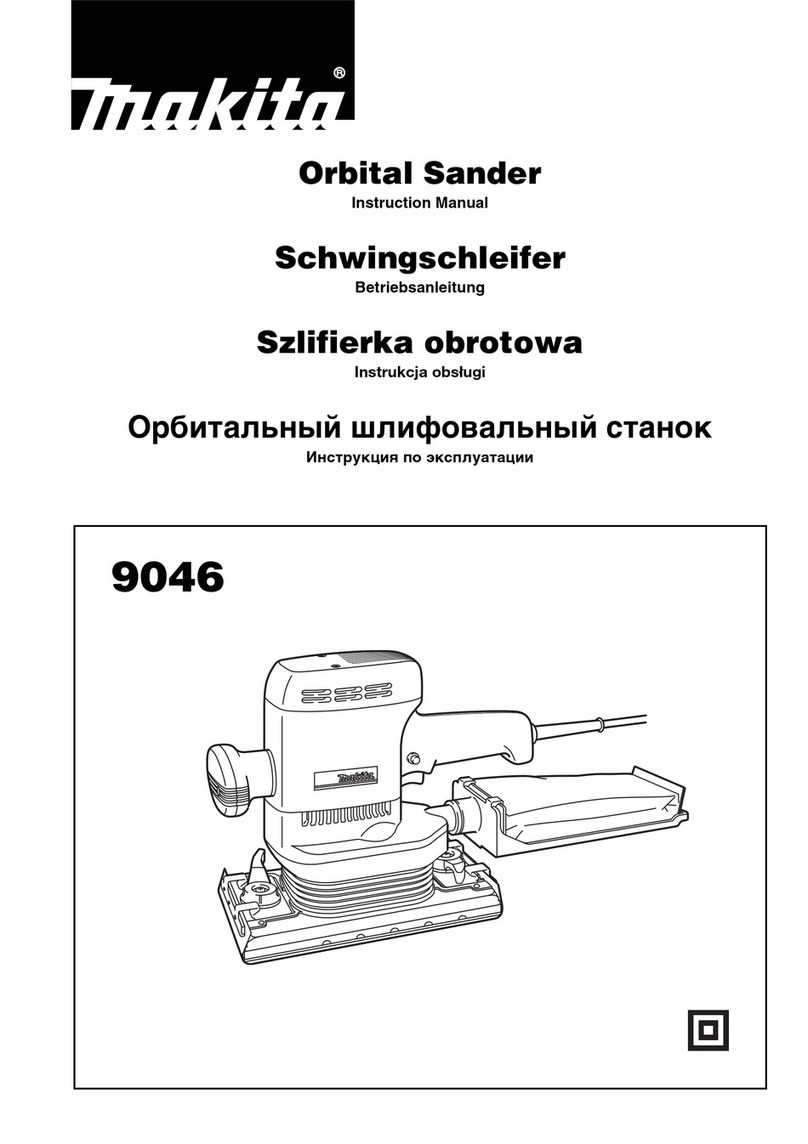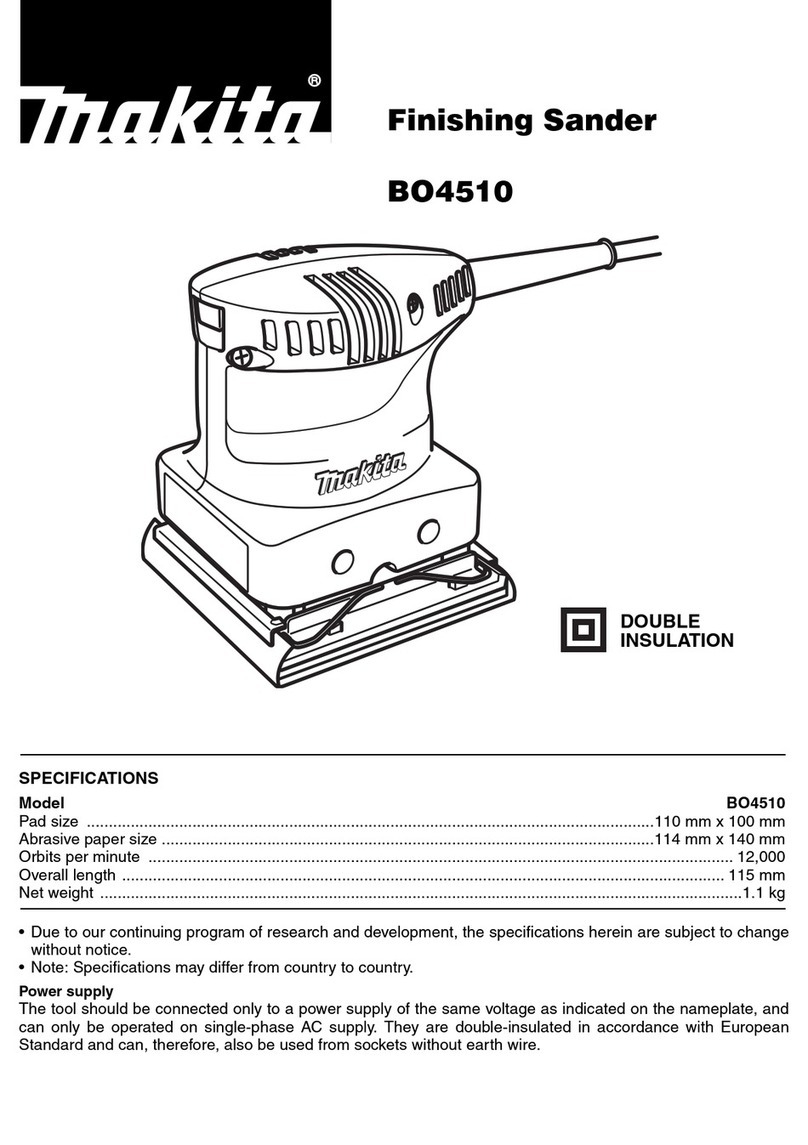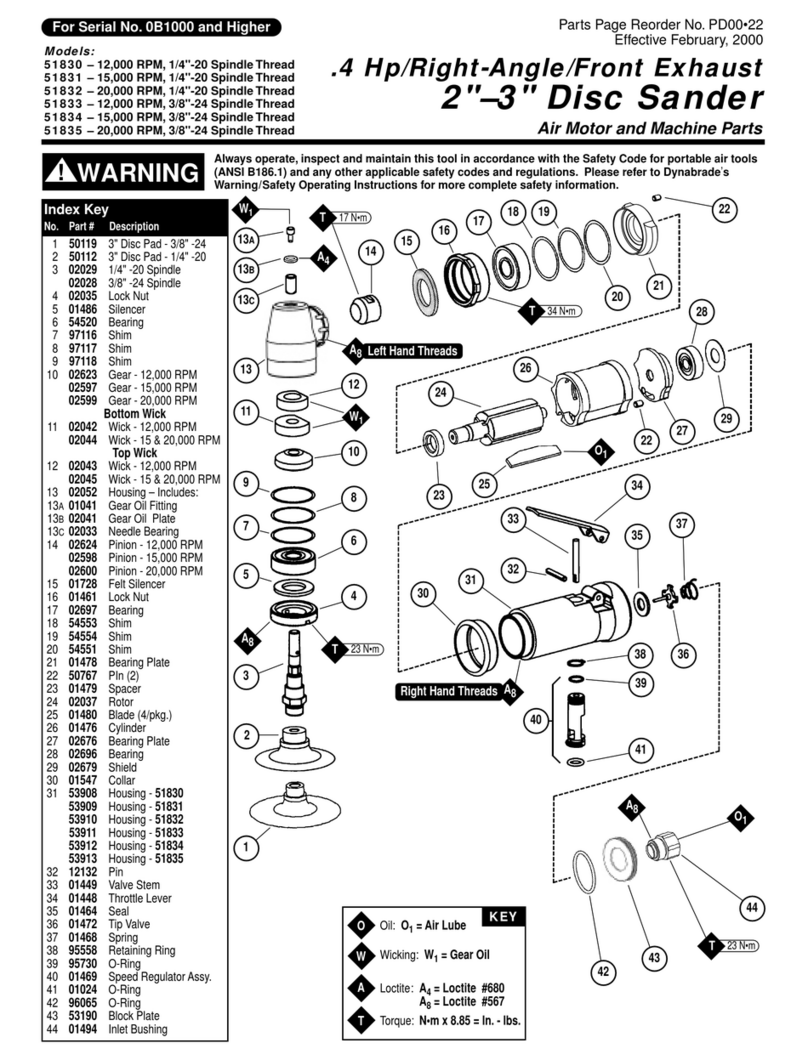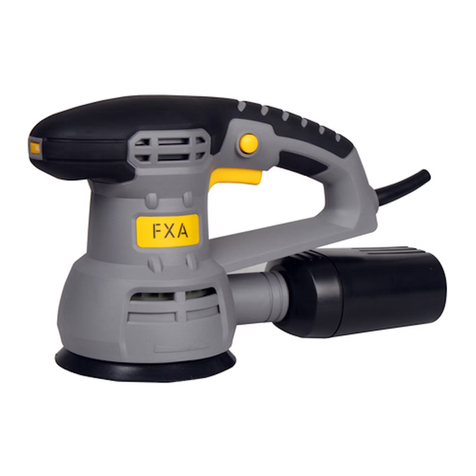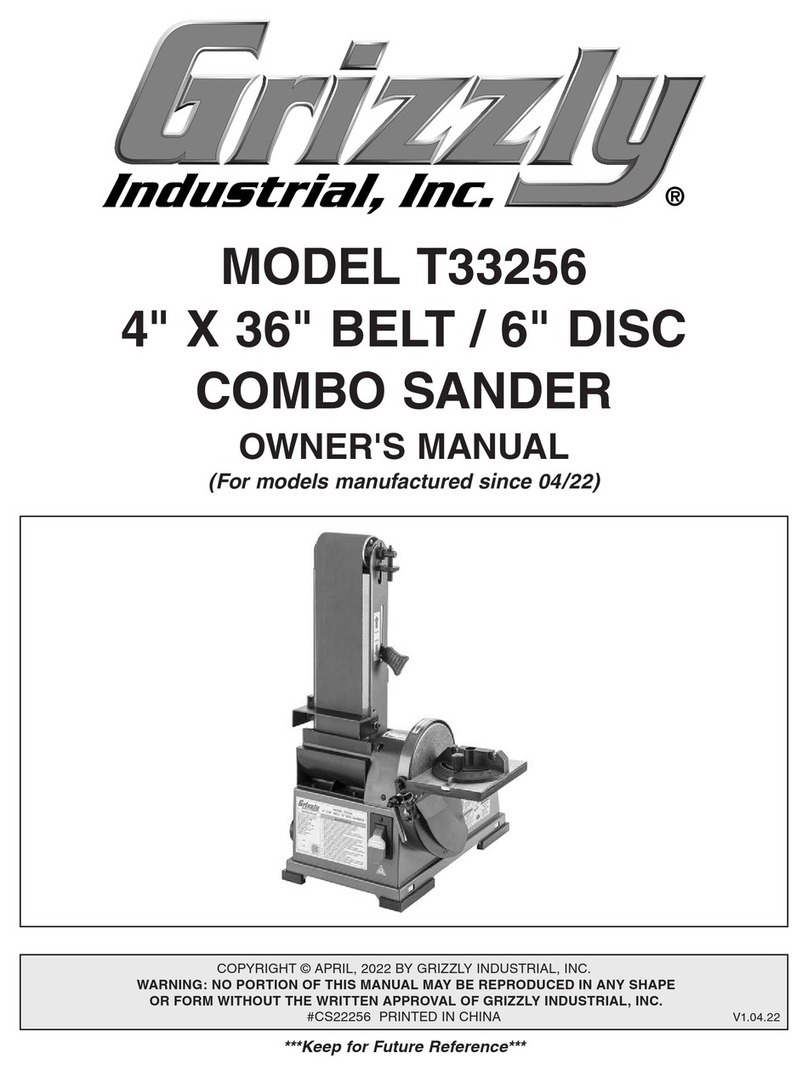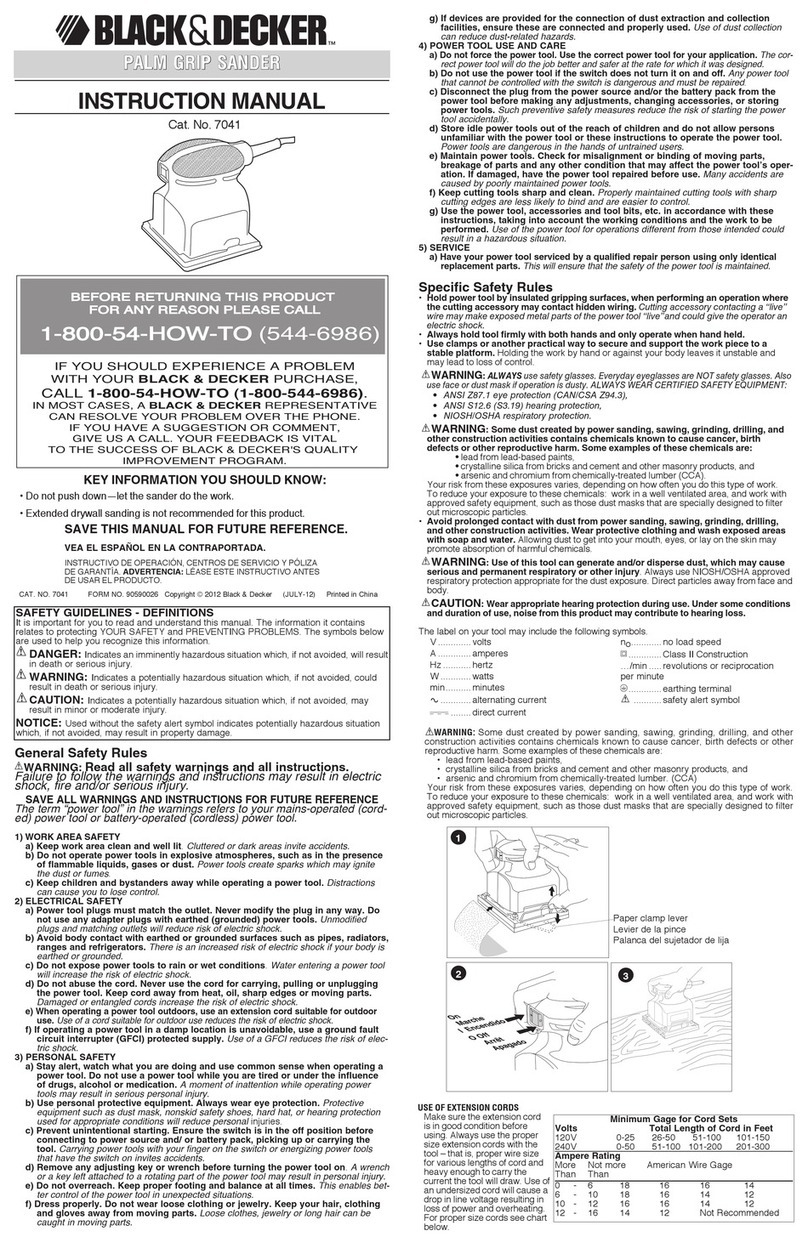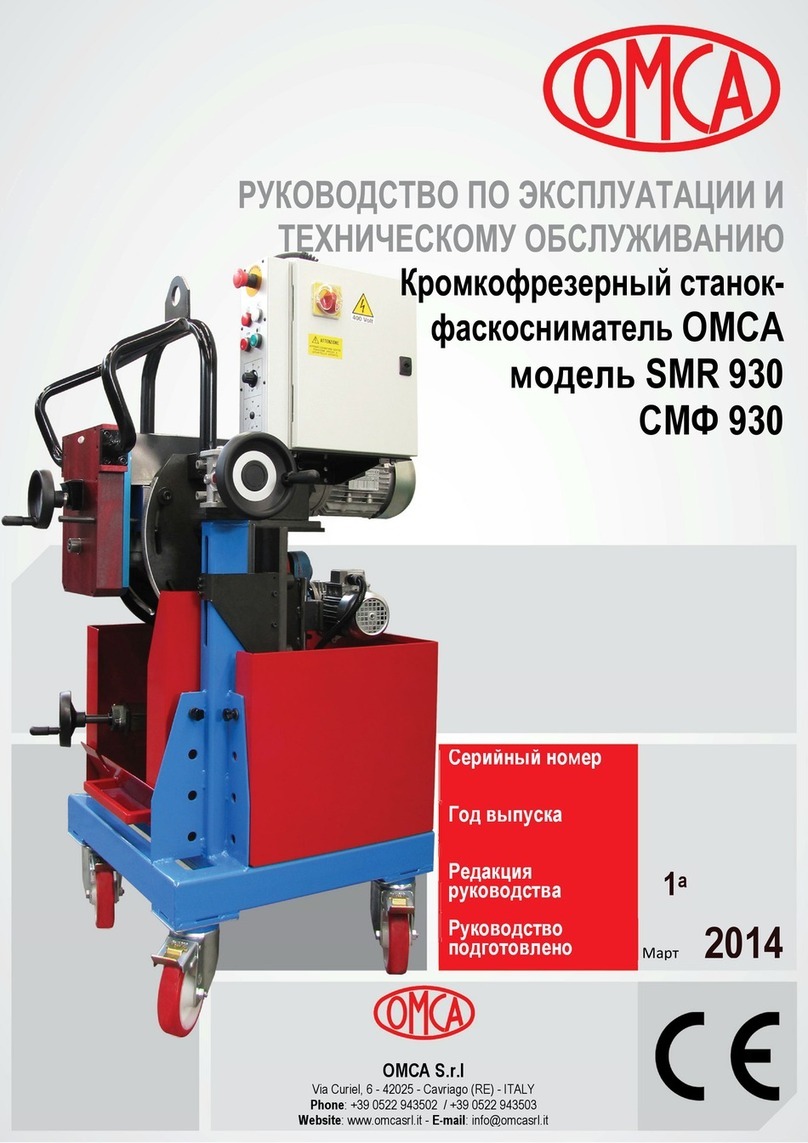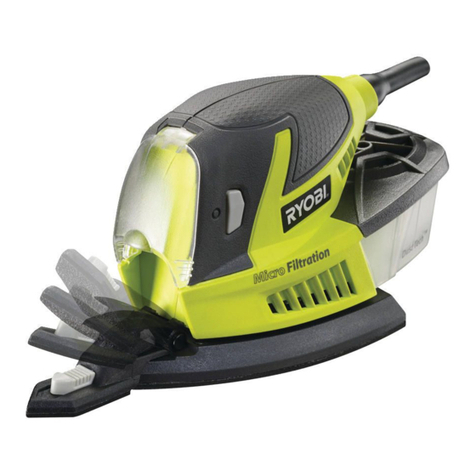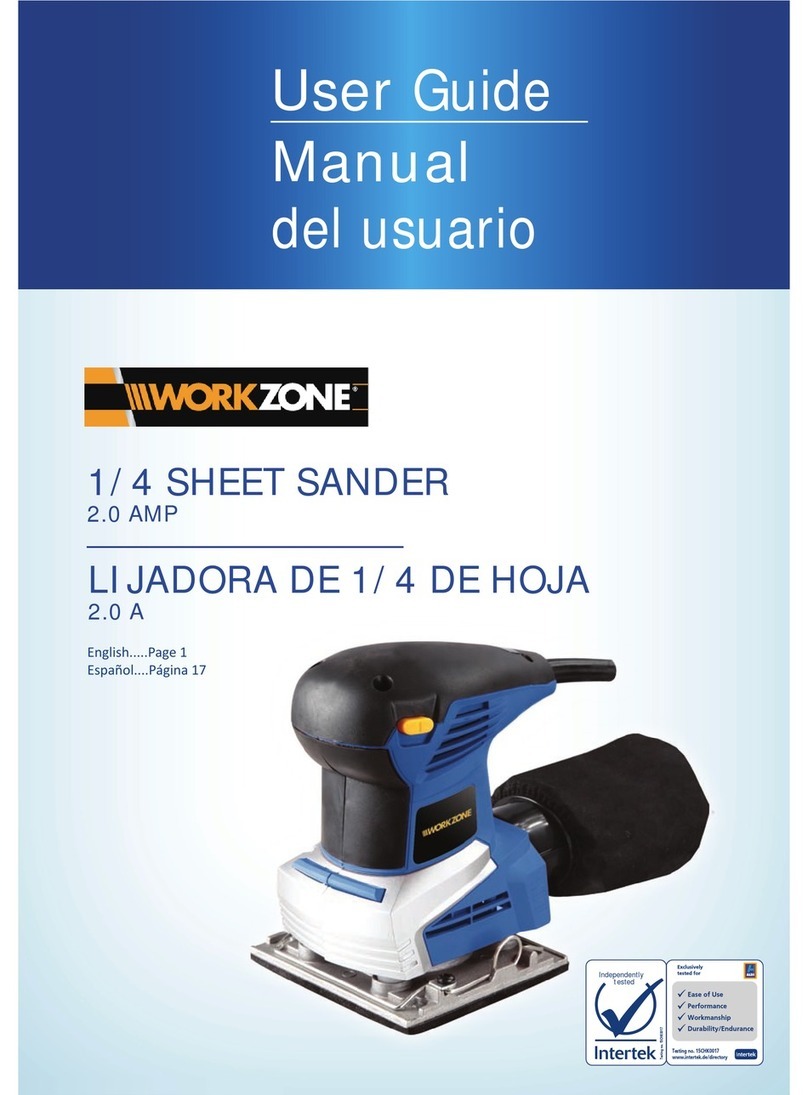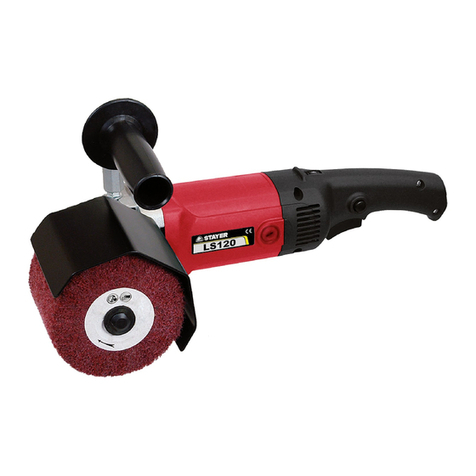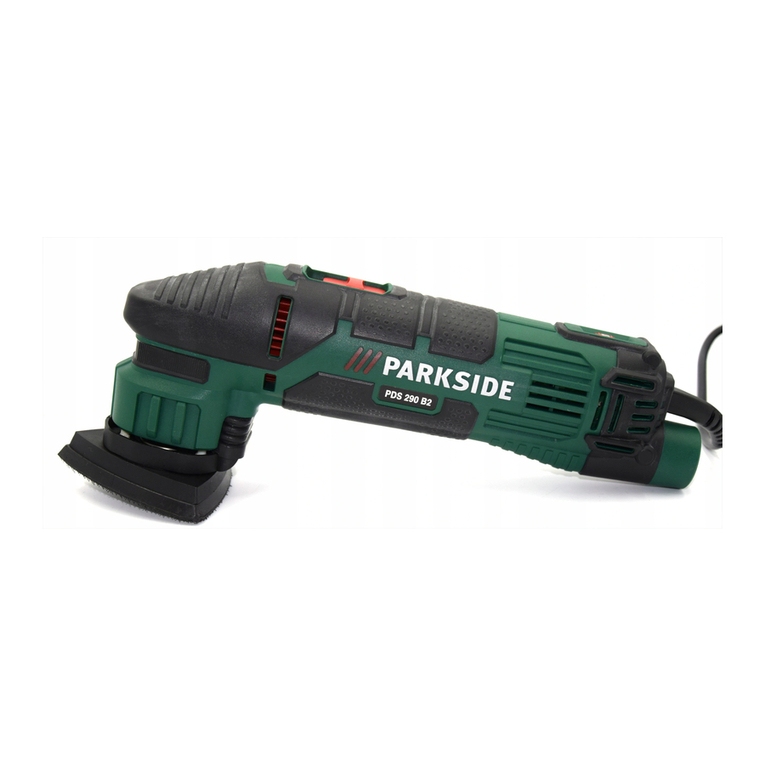
5
12. Do not run the power tool while carrying it at
your side. Accidental contact with the spinning
accessory could snag your clothing, pulling the
accessory into your body.
13. Regularly clean the power tool’s air vents. The
motor’s fan will draw the dust inside the housing and
excessive accumulation of powdered metal may
cause electrical hazards.
14. Do not operate the power tool near flammable
materials. Sparks could ignite these materials.
15. Do not use accessories that require liquid cool-
ants. Using water or other liquid coolants may result
in electrocution or shock.
Kickback and Related Warnings
Kickback is a sudden reaction to a pinched or snagged
rotating wheel, backing pad, brush or any other acces-
sory. Pinching or snagging causes rapid stalling of the
rotating accessory which in turn causes the uncontrolled
power tool to be forced in the direction opposite of the
accessory’s rotation at the point of the binding.
Kickback is the result of power tool misuse and/or incor-
rect operating procedures or conditions and can be
avoided by taking proper precautions as given below.
a) Maintain a firm grip on the power tool and
position your body and arm to allow you to
resist kickback forces. Always use auxiliary
handle, if provided, for maximum control
over kickback or torque reaction during start-
up. The operator can control torque reactions or
kickback forces, if proper precautions are taken.
b) Never place your hand near the rotating acces-
sory.
Accessory may kickback over your hand.
c) Do not position your body in the area where
power tool will move if kickback occurs. Kick-
back will propel the tool in direction opposite to
the wheel’s movement at the point of snagging.
d) Use special care when working corners,
sharp edges etc. Avoid bouncing and snag-
ging the accessory. Corners, sharp edges or
bouncing have a tendency to snag the rotating
accessory and cause loss of control or kickback.
e) Do not attach a saw chain woodcarving blade
or toothed saw blade. Such blades create fre-
quent kickback and loss of control.
Safety Warnings Specific for Polishing Operations:
a) Do not allow any loose portion of the polish-
ing bonnet or its attachment strings to spin
freely. Tuck away or trim any loose attach-
ment strings. Loose and spinning attachment
strings can entangle your fingers or snag on the
workpiece.
Additional Safety Warnings:
16. Do not leave the tool running. Operate the tool
only when hand-held.
17. Check that the workpiece is properly supported.
18. If working place is extremely hot and humid, or
badly polluted by conductive dust, use a short-
circuit breaker (30 mA) to assure operator safety.
19. Do not use the tool on any materials containing
asbestos.
SAVE THESE INSTRUCTIONS.
WARNING:
DO NOT let comfort or familiarity with product
(gained from repeated use) replace strict adherence
to safety rules for the subject product. MISUSE or
failure to follow the safety rules stated in this instruc-
tion manual may cause serious personal injury.
FUNCTIONAL DESCRIPTION
CAUTION:
• Always be sure that the tool is switched off and
unplugged before adjusting or checking function on the
tool.
Switch action (Fig. 1)
CAUTION:
• Before plugging in the tool, always check to see that
the switch trigger actuates properly and returns to the
“OFF” position when released.
To start the tool, simply pull the switch trigger. Release
the switch trigger to stop.
For continuous operation, pull the switch trigger and then
push in the lock button.
To stop the tool from the locked position, pull the switch
trigger fully, then release it.
Speed adjusting dial (Fig. 2)
The tool speed can be changed by turning the speed
adjusting dial to a given number setting from 1 to 5.
Higher speed is obtained when the dial is turned in the
direction of number 5. And lower speed is obtained when
it is turned in the direction of number 1.
Refer to the table below for the relationship between the
number settings on the dial and the approximate tool
speed.
013753
CAUTION:
• If the tool is operated continuously at low speeds the
motor will get overloaded, resulting in tool malfunction.
• The speed adjusting dial can be turned only as far as 5
and back to 1. Do not force it past 5 or 1, or the speed
adjusting function may no longer work.
The tools equipped with electronic function are easy to
operate because of the following features.
•Electronic constant speed control
Possible to get fine finish, because the rotating speed
is kept constant even under the loaded condition.
•Soft start feature
Soft start because of suppressed starting shock.
High-Low speed setting button (Fig. 3)
The tool speed can be changed instantly while the tool is
running. Depress the “ I ” position for lowest speed and
depress “ II ” position for a given number setting.
The tool speed cannot be changed when the button is in
“ I ” position, even if you turn the speed adjusting dial.
When you turn the speed adjusting dial, always be sure
that the button is depressed in “ II ” position.
Number min–1 (RPM)
1 – 2 600 – 800
2 – 3 800 – 1,300
3 – 4 1,300 – 1,800
4 – 5 1,800 – 2,100




